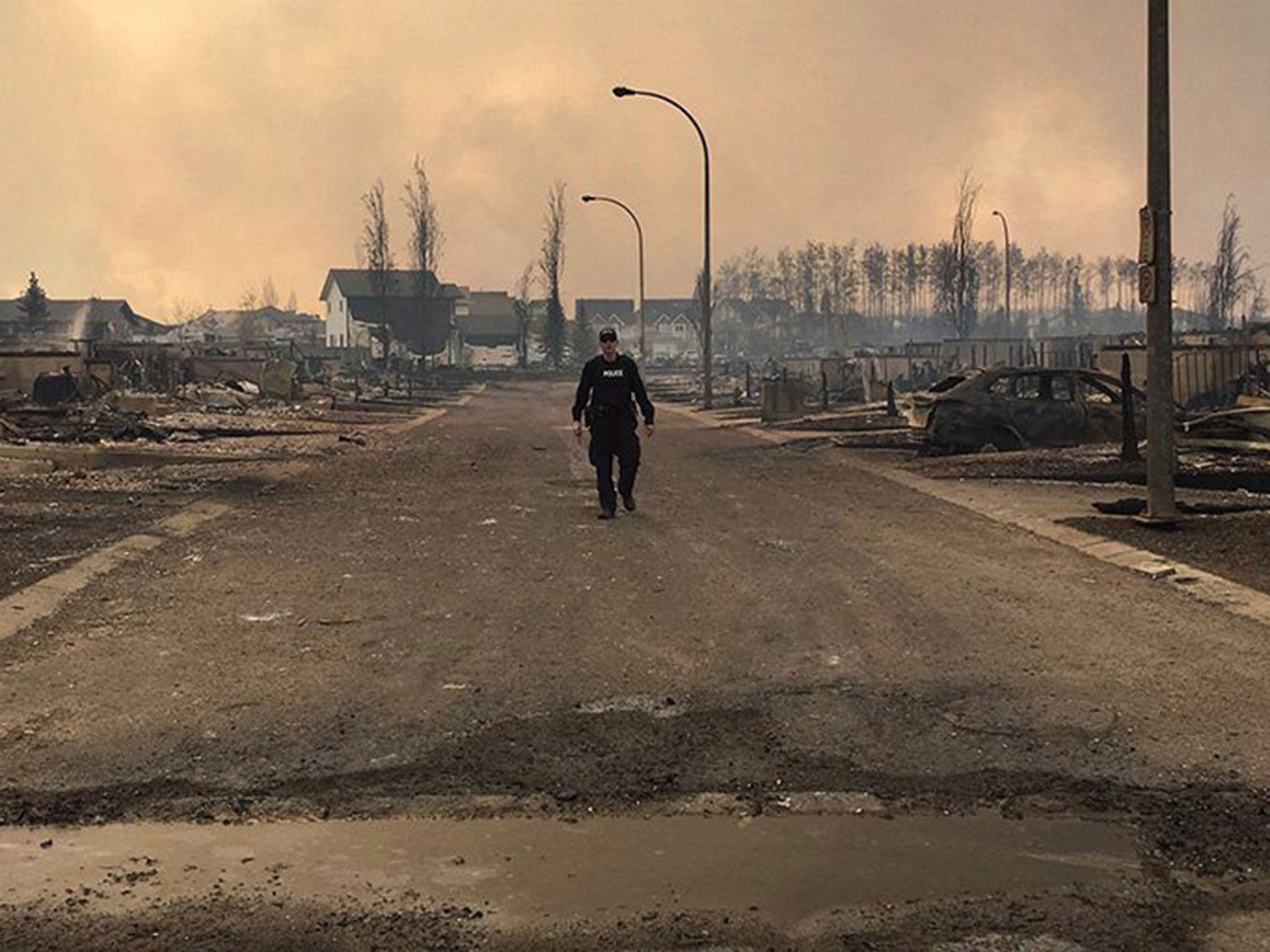Canada wildfire: The climate change connection to the Fort McMurray ‘firestorm’
The blaze, which has forced 80,000 people to flee their homes, has now burned an area larger than Hong Kong

Your support helps us to tell the story
From reproductive rights to climate change to Big Tech, The Independent is on the ground when the story is developing. Whether it's investigating the financials of Elon Musk's pro-Trump PAC or producing our latest documentary, 'The A Word', which shines a light on the American women fighting for reproductive rights, we know how important it is to parse out the facts from the messaging.
At such a critical moment in US history, we need reporters on the ground. Your donation allows us to keep sending journalists to speak to both sides of the story.
The Independent is trusted by Americans across the entire political spectrum. And unlike many other quality news outlets, we choose not to lock Americans out of our reporting and analysis with paywalls. We believe quality journalism should be available to everyone, paid for by those who can afford it.
Your support makes all the difference.Climate change has contributed towards the “hellish” wildfire that is rampaging through Alberta, Canada, experts have said.
The area of blaze, described as a “firestorm”, is now larger than Hong Kong and has left a trail of destruction in its wake, forcing 80,000 residents to flee their homes.
Numerous scientists have said a “perfect storm” of factors, including climate change and El Niño, caused an event which is likely to be remembered as one of the worst natural disasters in Canadian history.
"This [fire] is consistent with what we expect from human-caused climate change affecting our fire regime," University of Alberta wildfire expert Dr Mike Flannigan told the BBC.
A number of factors are believed to have led to the on-going conflagration. Most significantly, snowpack in the boreal forest which dominates the area around Fort McMurray – which should have acted as a check on wildfires – has been minimal and melted due to record warm temperatures. This, and the lack of precipitation, has led to conditions like “perfect kindling”, according to meteorologist Eric Holthaus, writing in Slate.
Professor Judith Kulig of the University of Lethbridge in Alberta believed a combination of factors were involved, but told the BBC: "We've had an incredibly dry winter, we didn't have enough snow pack."
Boreal forests, characterised by pine, spruce and larch trees, also contain nearly 30 per cent of all the world’s carbon stored on land, so as it burns it sends “carbon into the atmosphere where it warms the globe”, according to Climate Central, leading to a worsening cycle of global warming.
There were other factors involved in the conflagration, too, including poor forest management, rapid urban development and a hugely powerful El Niño weather system. Authorities have admitted the fire can now only be stopped by rain.
The leader of Canada’s Green Party, Elizabeth May, said: “The fact that the forest fire season has arrived so early in northern Alberta is very likely a climate event - very likely related to extreme high temperatures and very low humidity, very low precipitation and it is - as we saw in a quote from one of the firefighters - a firestorm.”
There has been an increasing trend of wildfires in North America, with 330 in Alberta alone before the Fort MacMurray blaze, and wildfire seasons have been rapidly increasing in length. In Alberta, the fire season began on 1 March, two weeks earlier than in 2015. It used to begin in May.
The problem is not just restricted to Canada.
“Climate change has led to fire seasons that are now on average 78 days longer than in 1970,” a 2015 US Forest Service report said, and the “US burns twice as many acres as three decades ago.” Many scientists believe this increase is set to continue.
Join our commenting forum
Join thought-provoking conversations, follow other Independent readers and see their replies
Comments